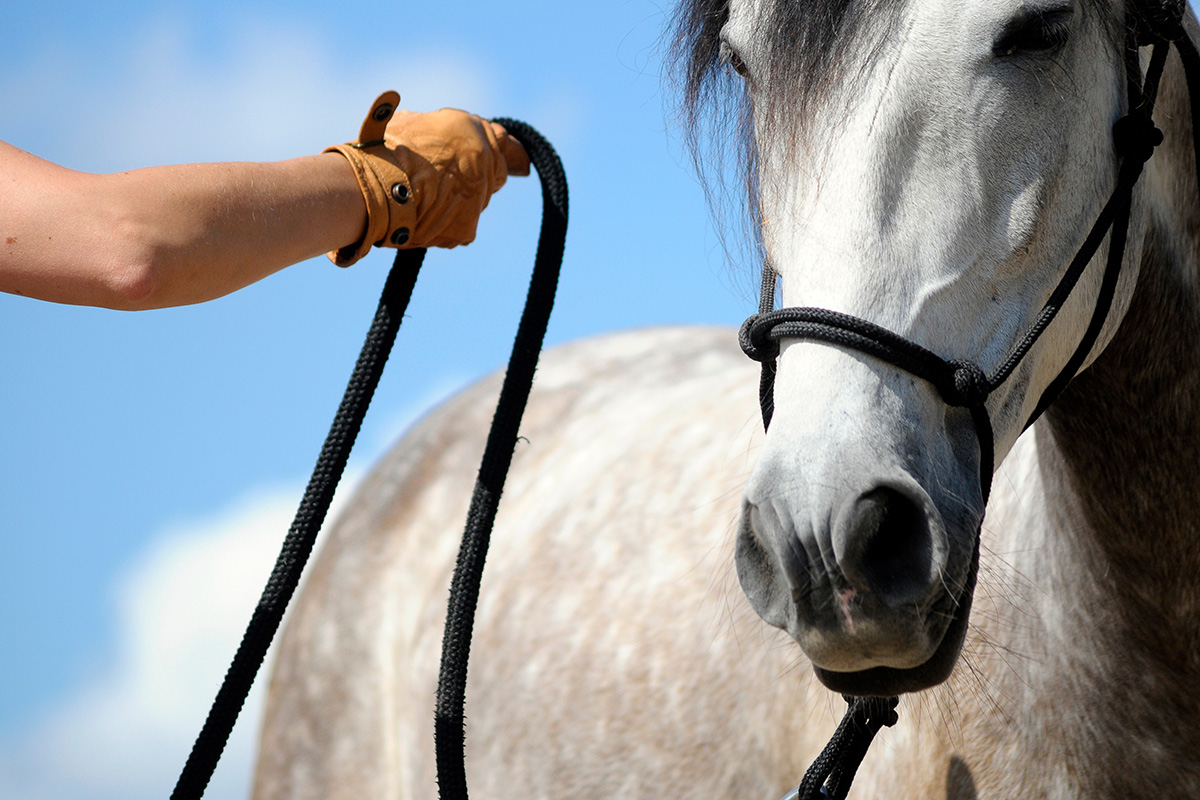Unlock the Secret to Equine Behavior
Read the full article about equine behavior in Horse Illustrated’s July 2024 issue! Below is some great content we couldn’t fit in the print article, featuring insight from animal behaviorist and equine welfare expert Emily Weiss, Ph.D., on the key to solving any horse behavior challenge.


Food Rewards Fears: The Pushy Horse
Many horse people have concerns about using food as a reward and believe their horse may become pushy, or aggressive about the treats. To explain why horses become pushy about treats, applied animal behaviorist Emily Weiss, Ph.D., always goes back to the “why” behind equines and all organisms doing what they do.
“They do it because it feels good,” she says, which means that if a horse is pushy, they must have been getting a treat at least every once and a while.
The horse thinks, ‘If the behavior results in the thing that feels good, I push, and occasionally I get a treat,’ then that behavior will persist.
Typically, it’s a case of user error; horse handlers just give in, or they’re not paying attention and inadvertently reward pushiness. While some horses are more persistent than others, every horse is susceptible to this inadvertent training, says Weiss.
“Food needs to be delivered very purposefully and never should be delivered when it is the horse pushing or touching you to receive a treat,” says Weiss.
Positive Reinforcement Pitfalls
If you’re looking to incorporate positive reinforcement in general interactions with your horse, which could include being on his back, Weiss recommends finding a sound you can make on your own as the bridge or marker, without relying on a clicker or other device.
“Holding a clicker, you can fumble a lot and you can end up missing [the moment],” says Weiss. “Timing is so important with any kind of training, and with positive reinforcement you’re capturing the behavior as it happens,” she shares.
Another pitfall can be using food as a lure, such as getting your horse from a pasture, where many people bring out a bucket of grain and shaking it to get their horse to come. This often results in the horse grabbing a mouthful and dashing off when you try to get the lead rope over his neck.
“It becomes a trick, and nobody likes to be tricked,” says Weiss. “The difference between going out with a bucket and getting that lead rope on really quick and a true positive reinforcement training where I’m teaching the horse to come to me, is that he is learning the contingency of ‘I get a halter on or rope around my neck and I get something good.’
“If the horse stood still as I approached, I’m going to whistle and give him a treat, and then I’m going to walk away,” she continues. “And very quickly that horse is going to just want to be with me. This isn’t that I’m tricking him to come be with me. He’s learning: ‘I approach her, I get a food reward. I approach her, she puts the lead rope over me, I get a food reward. I approach her, she put the lead rope over me, puts the halter on me, I get a food reward.’
“Ultimately, it will take less time to teach the horse to come on cue, rather than tricking him with the bucket,” says Weiss. “Because over time, tricking is not going to work, and it may be eroding the trust between you and your horse. And I guarantee you if there’s an emergency and you’ve got to grab him fast, it’s going to go much faster if he’s trained to reliably come on cue, as opposed to hoping a shake of the bucket will break through the stress of the situation.”
Next time you are finding yourself frustrated because your horse just won’t stop X or do Y, pause and observe what is happening before and after the behavior so that you can set him up for success by understanding what feels good (or less bad) to him.
Recent Posts
2025 FEI Basel World Cup Finals Hands Reins to Fort Worth 2026
As U.S. athletes look back on valuable experience gained at the 2025 FEI World Cup Finals in Switzerland, the next…
How to Clean a Horse’s Sheath
If you’ve never cleaned a horse’s sheath, you probably have questions. First and foremost, is it really necessary? And more…
All Three Equestrian Sports Receive Final Confirmation for the LA 2028 Olympic Games
After a nail-biting two years of speculation about the inclusion of equestrian sports in the next Olympic Games, it was…
ASPCA Right Horse Adoptable Horse of the Week: Xanthus
Welcome to Horse Illustrated’s weekly installment of the Right Horse Adoptable Horse of the Week, offered in partnership with the…
Be Your Horse’s Joint Health Champion
Equine arthritis can affect horses of all disciplines and ages, and early intervention is crucial for maintaining comfort and performance.…
Tamie Smith: Taking It To The Next Level
Mother, grandmother, and winning 5* eventing rider—these three titles don’t typically go together. However, Tamie Smith, 49, is all of…